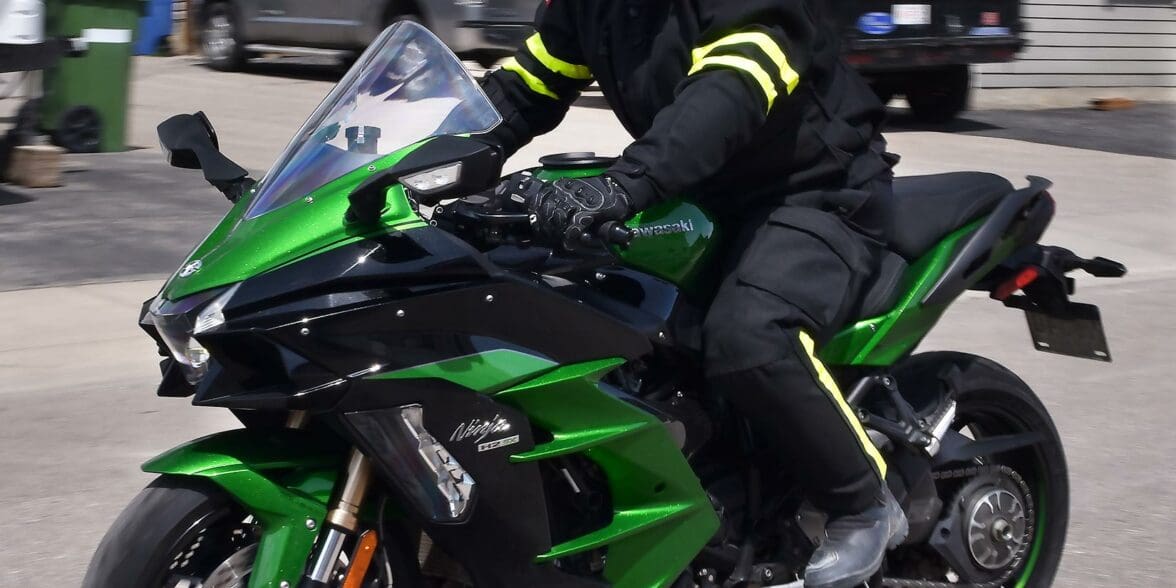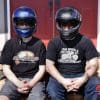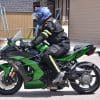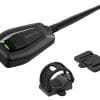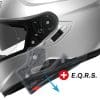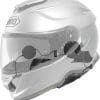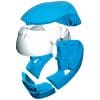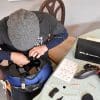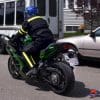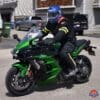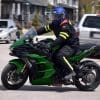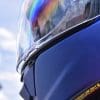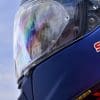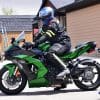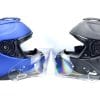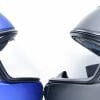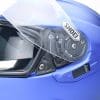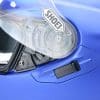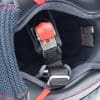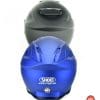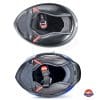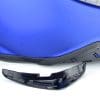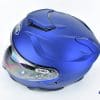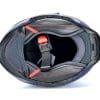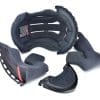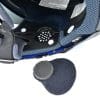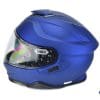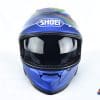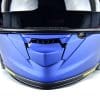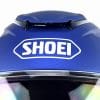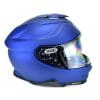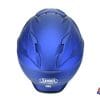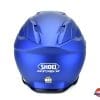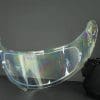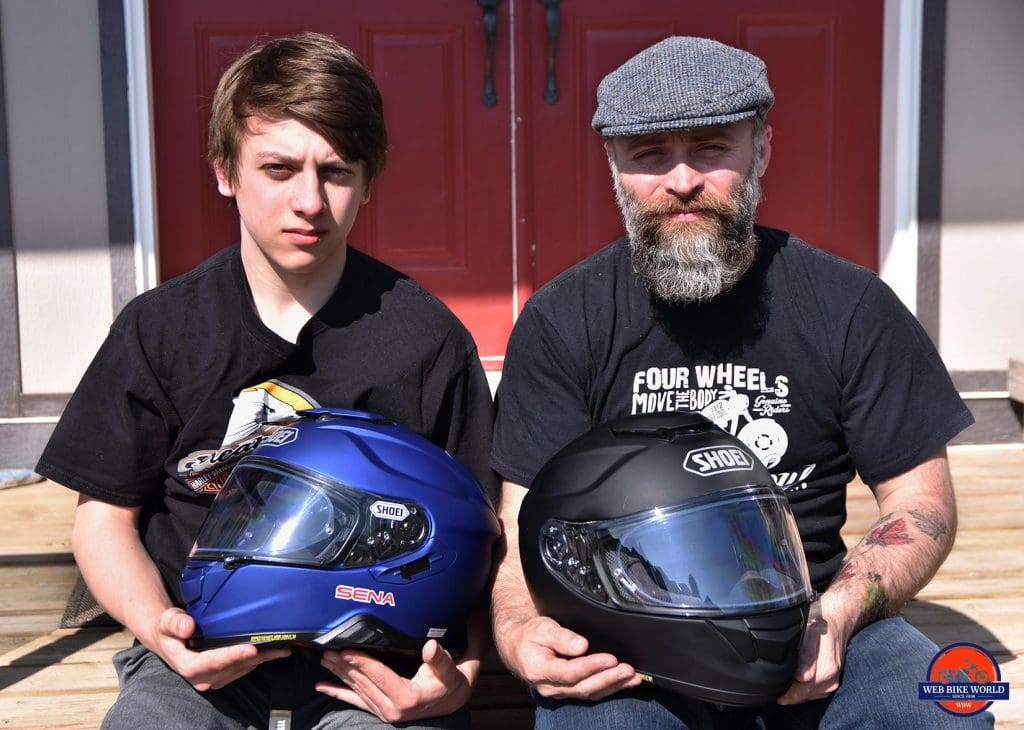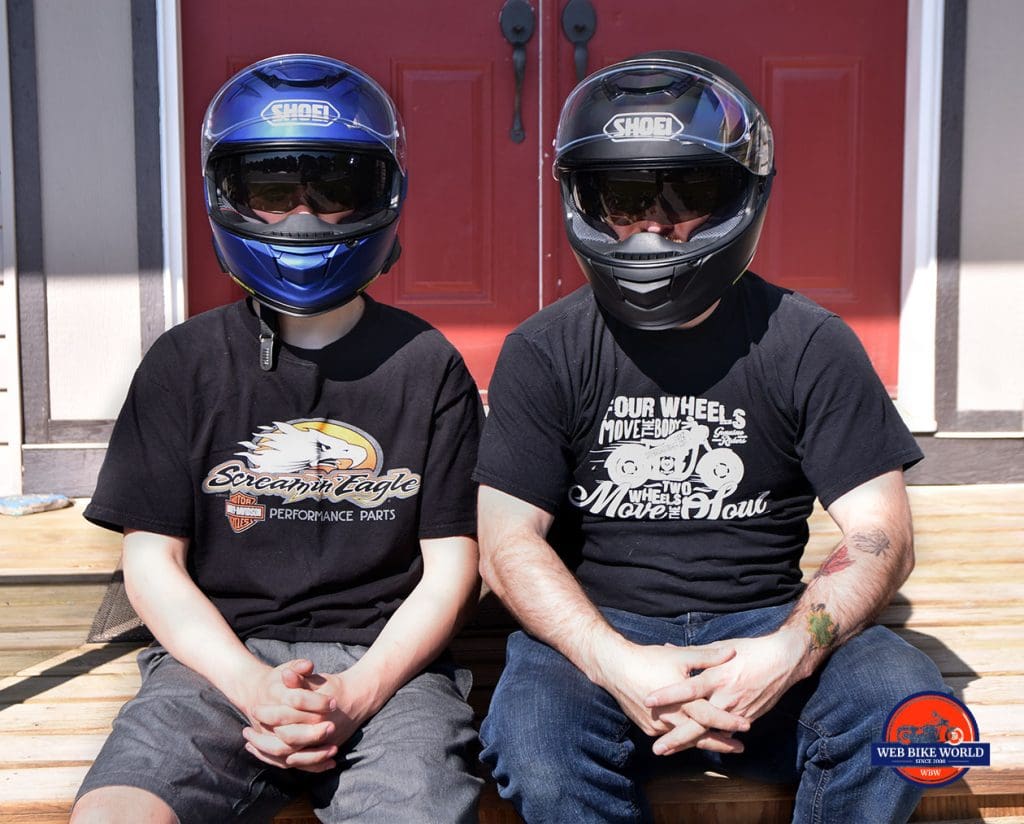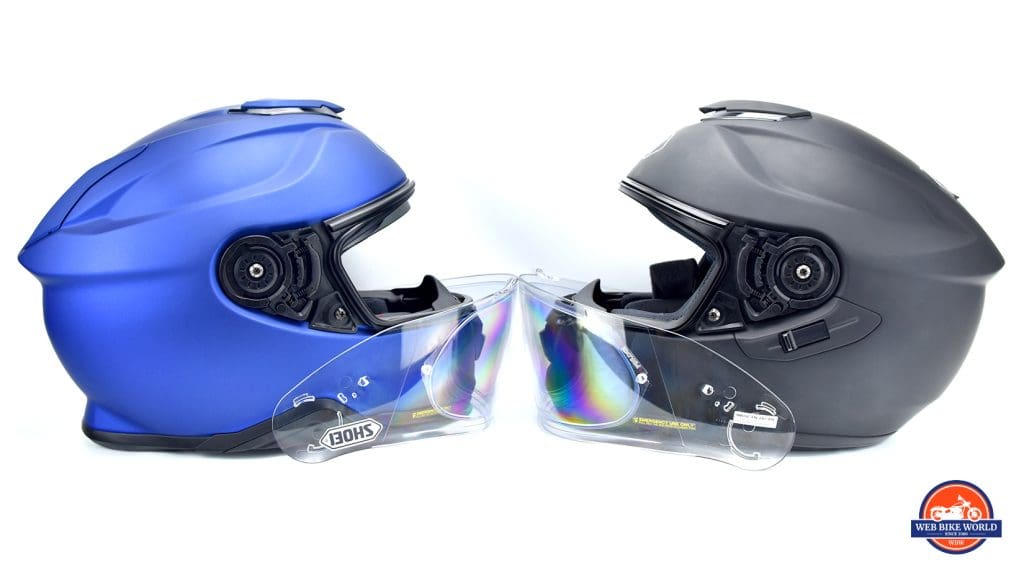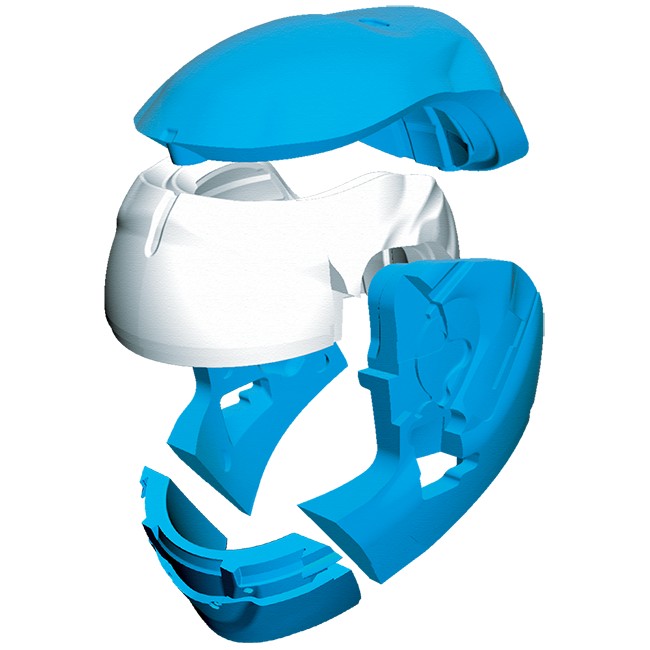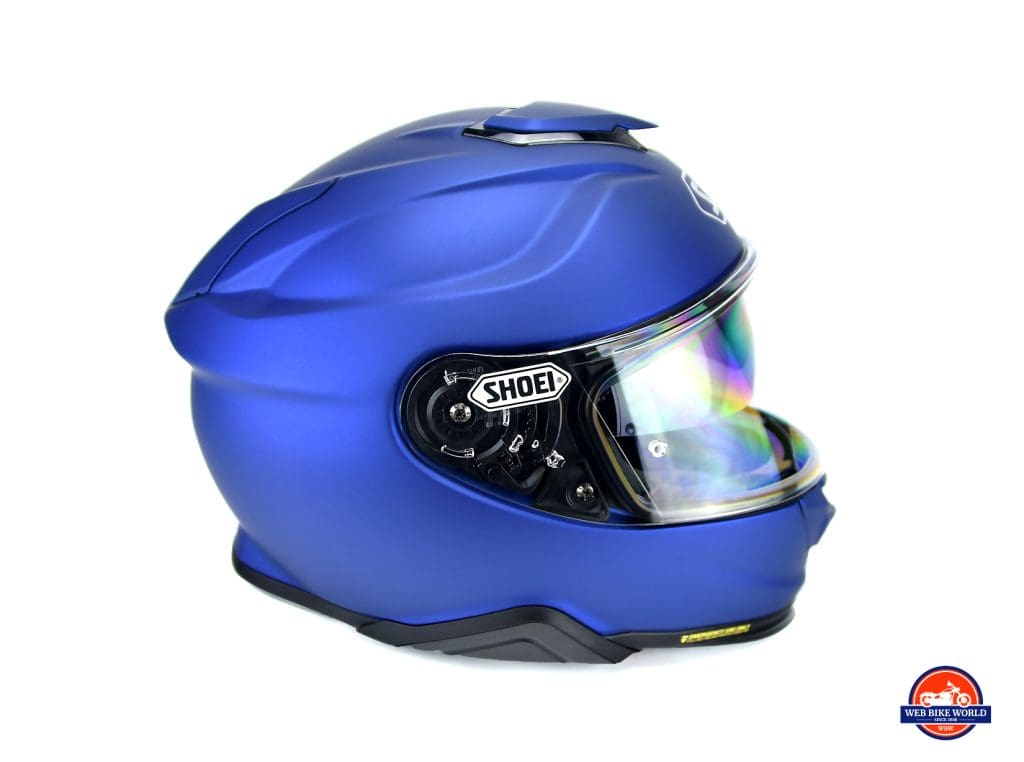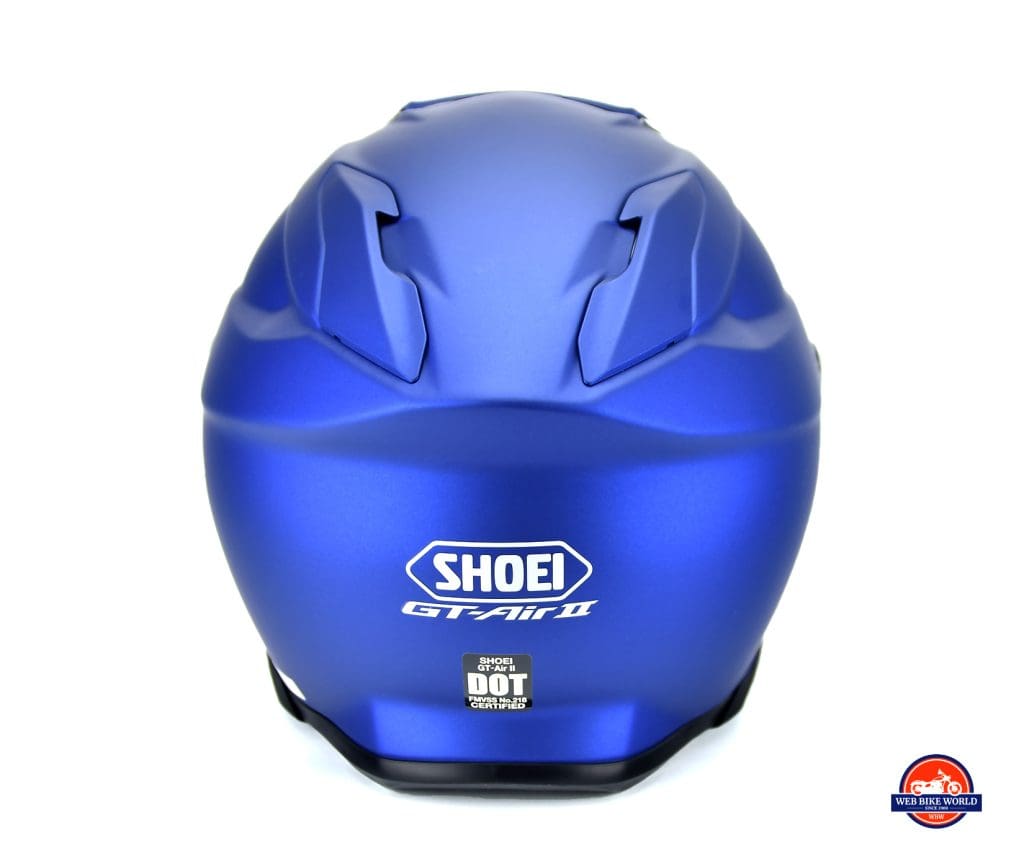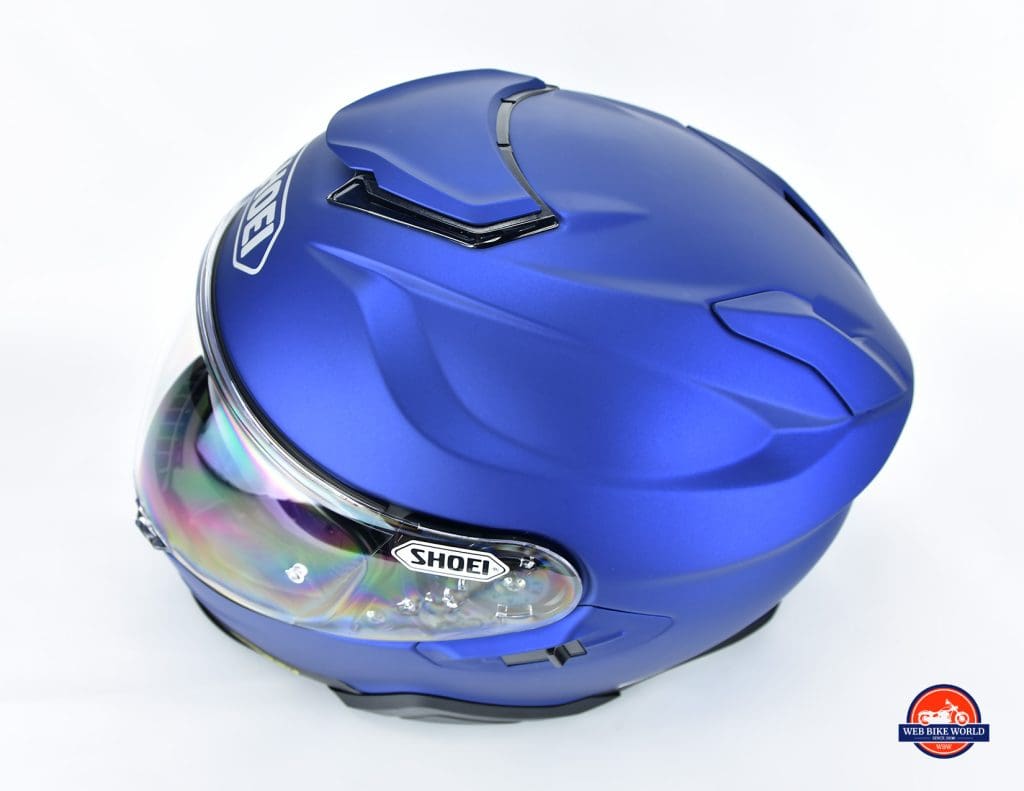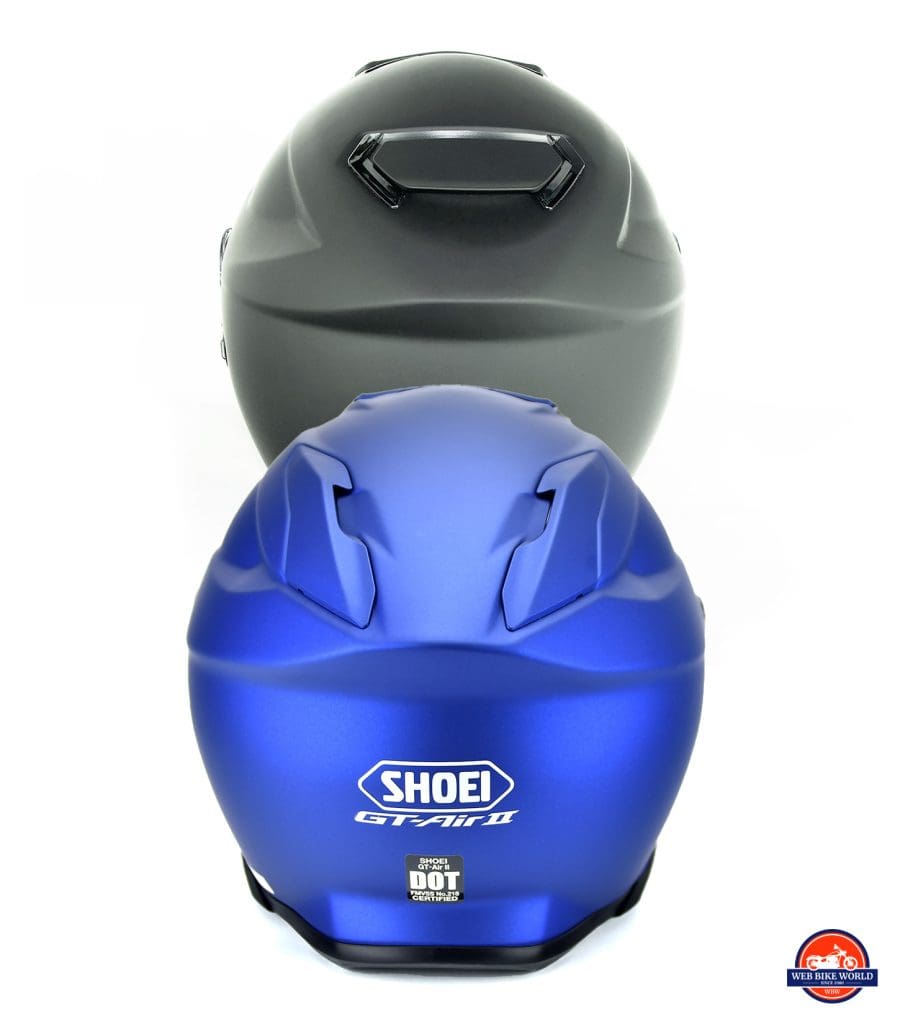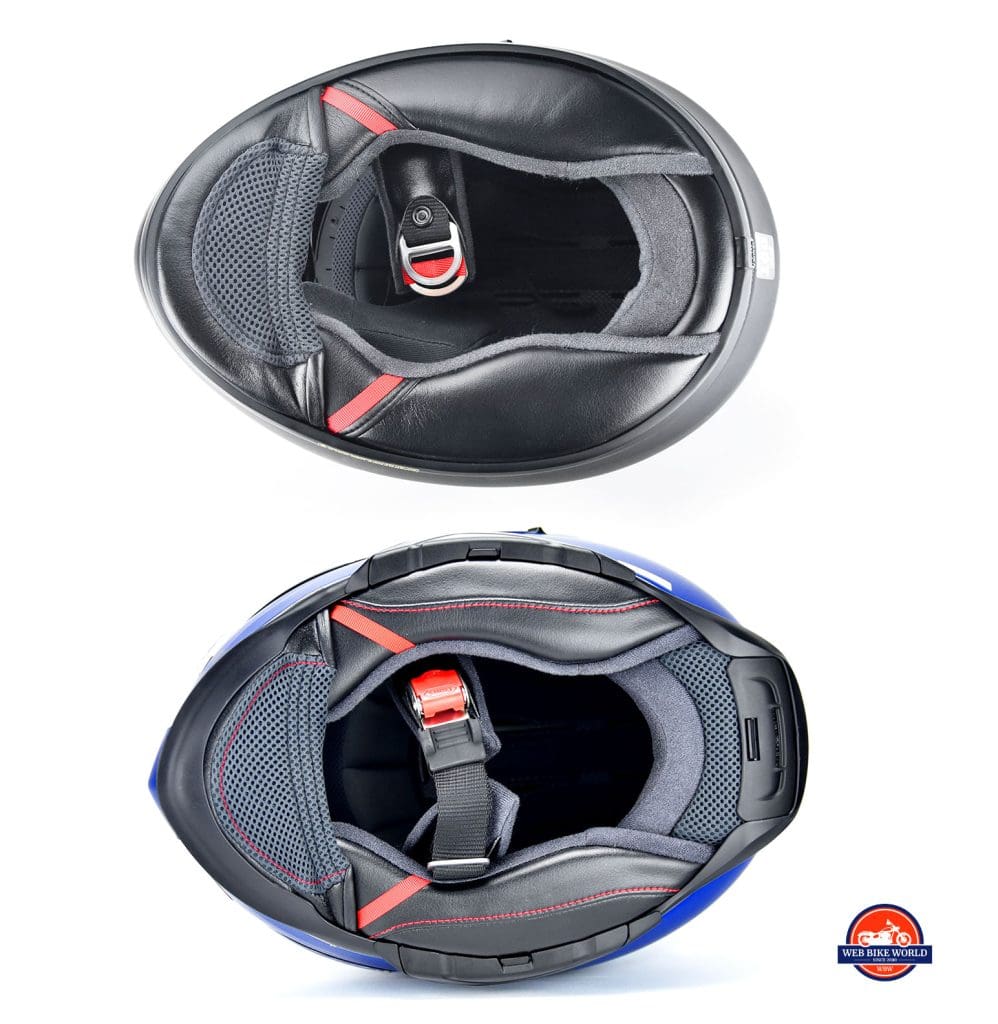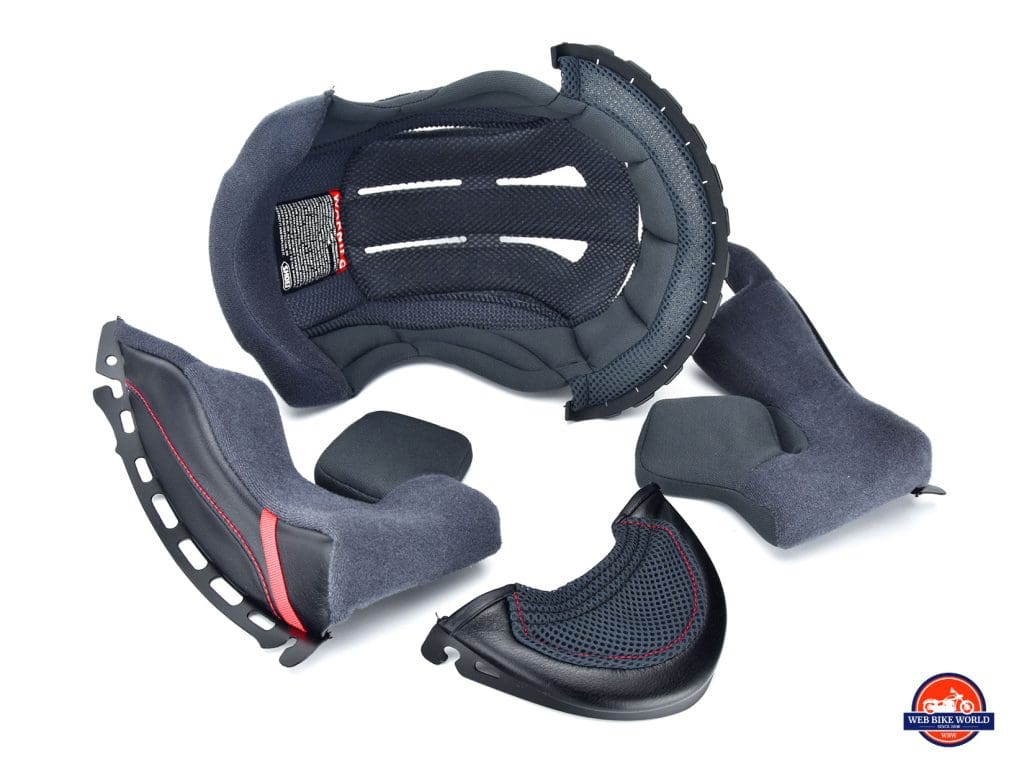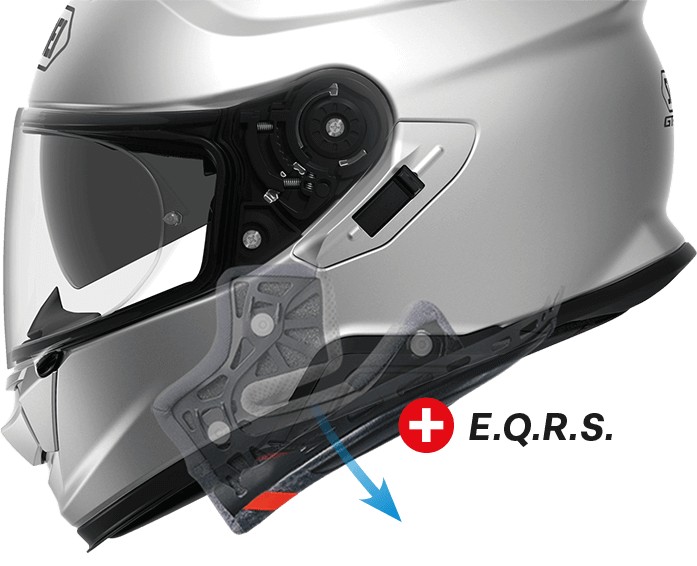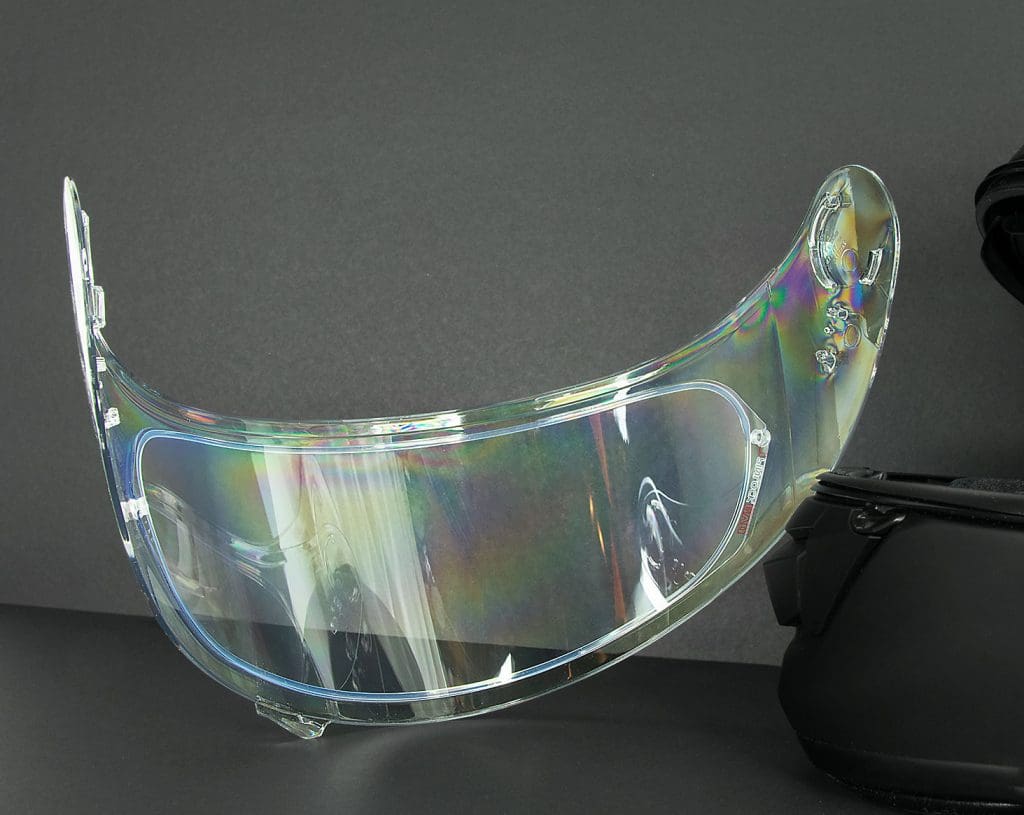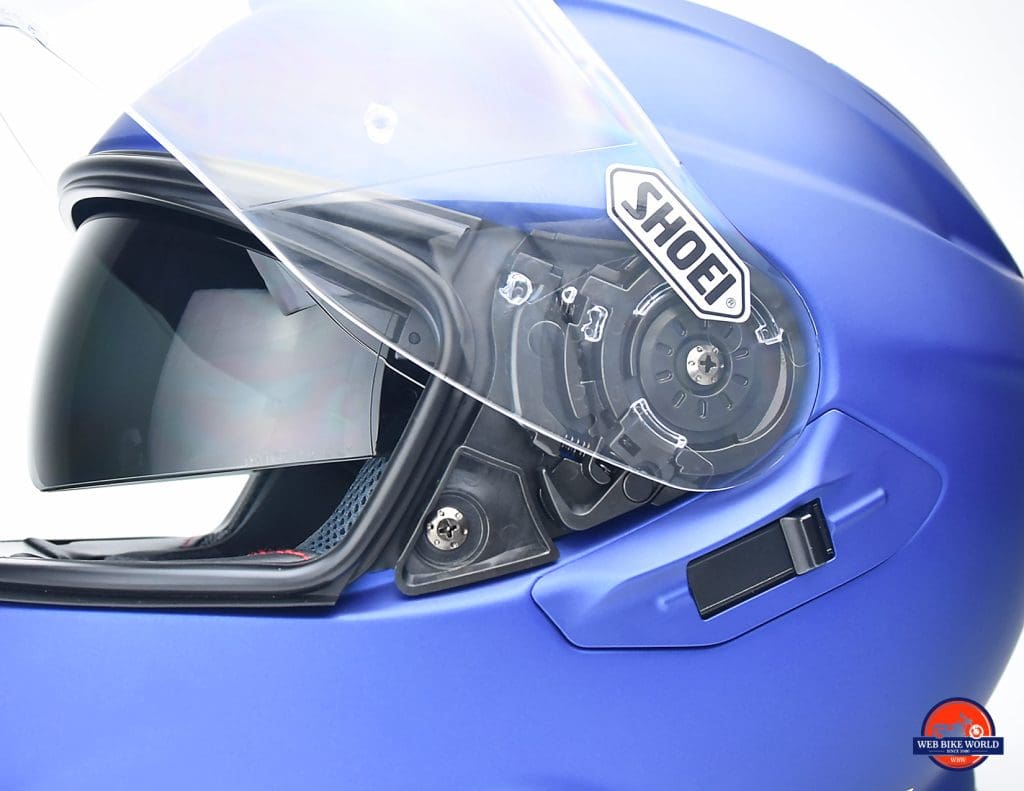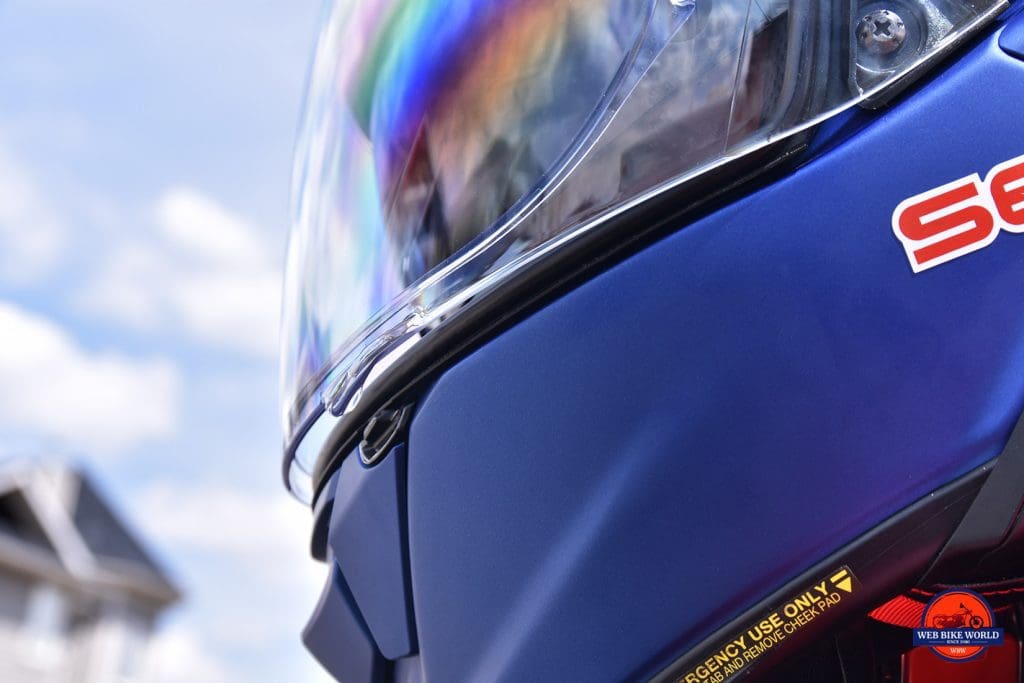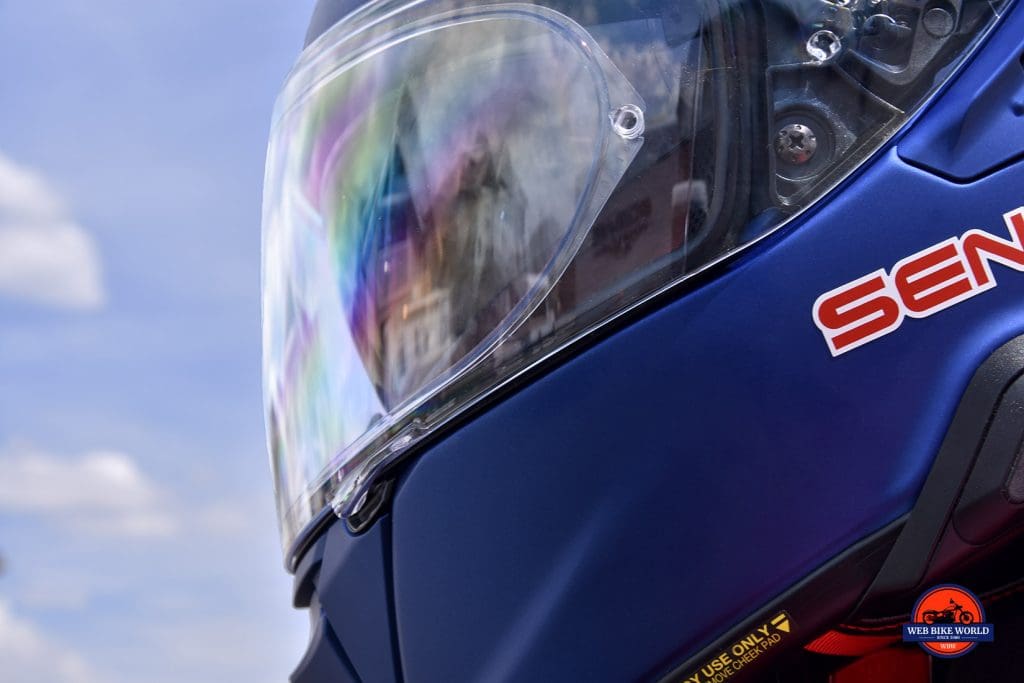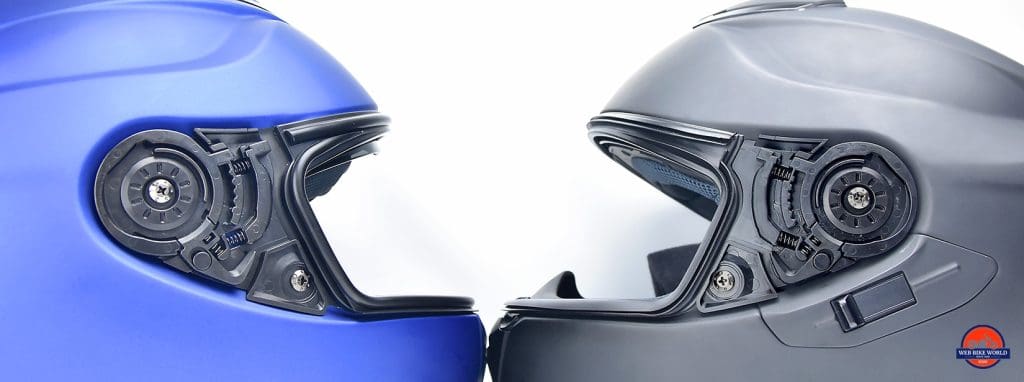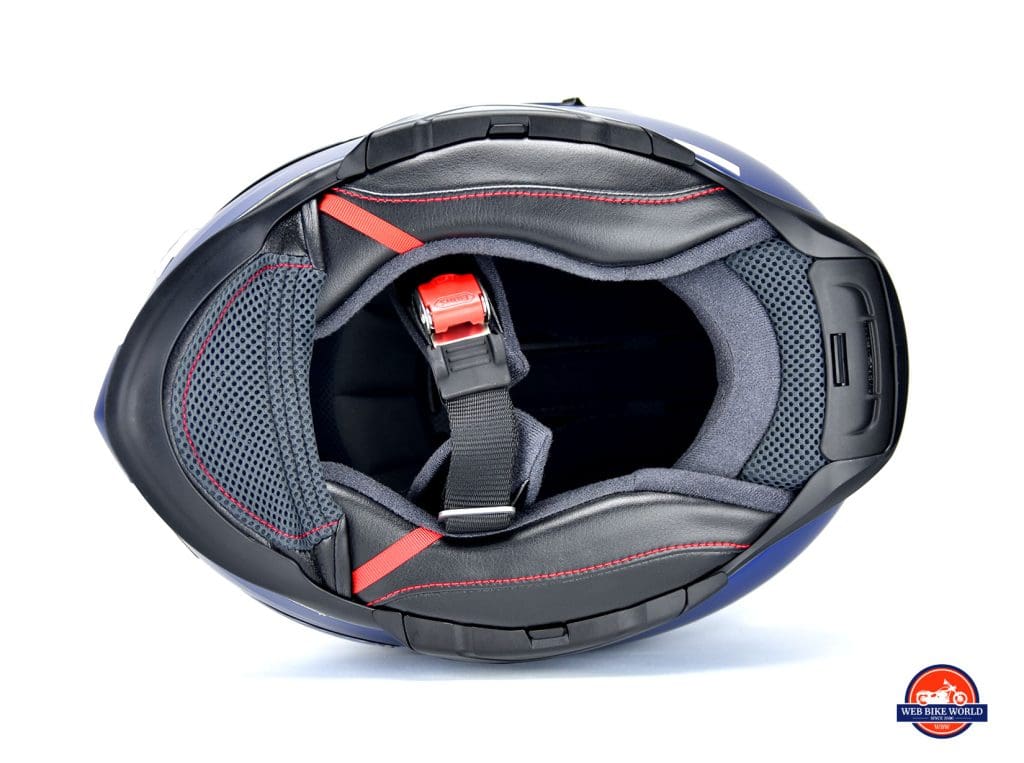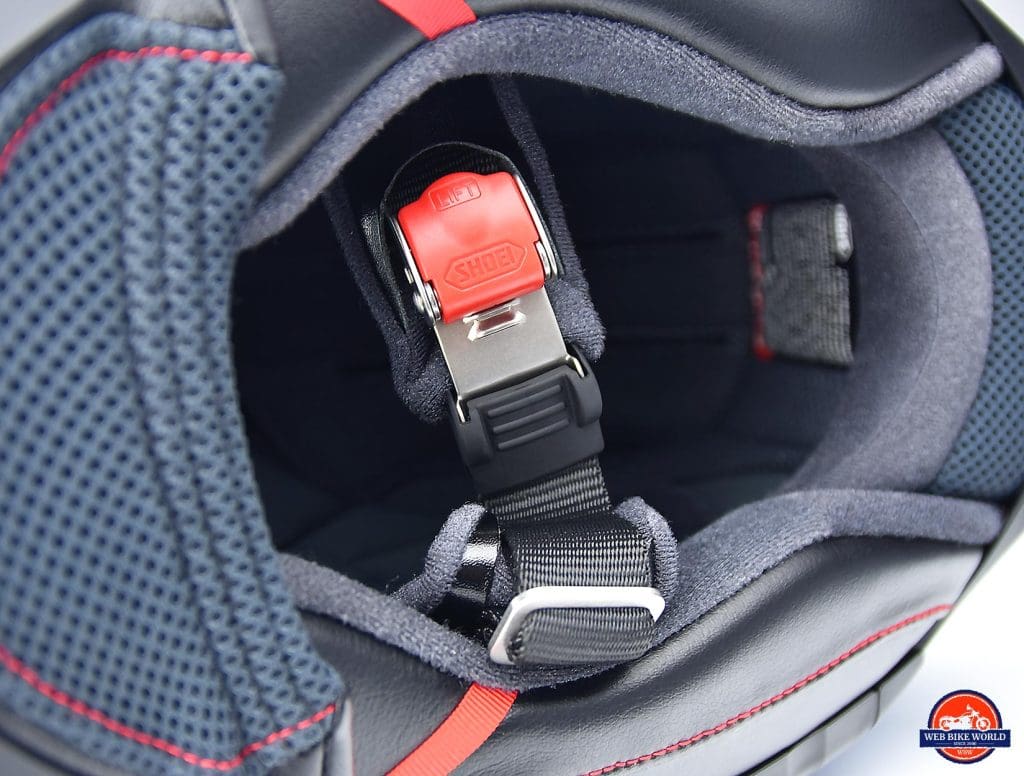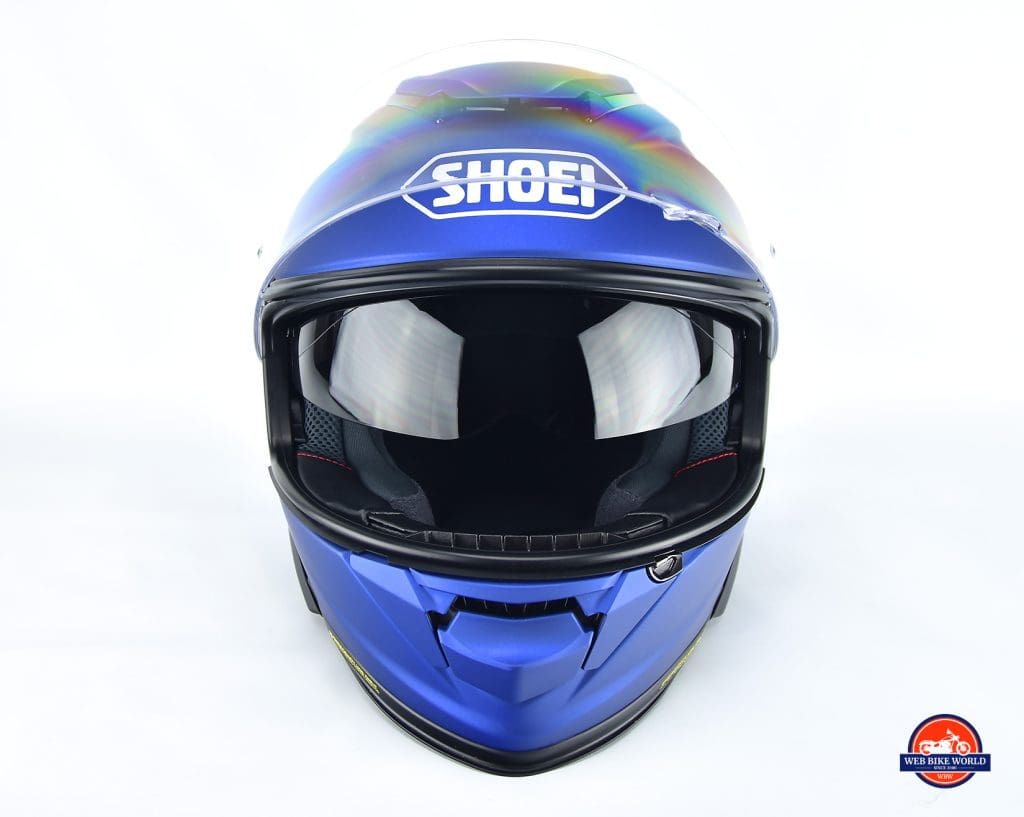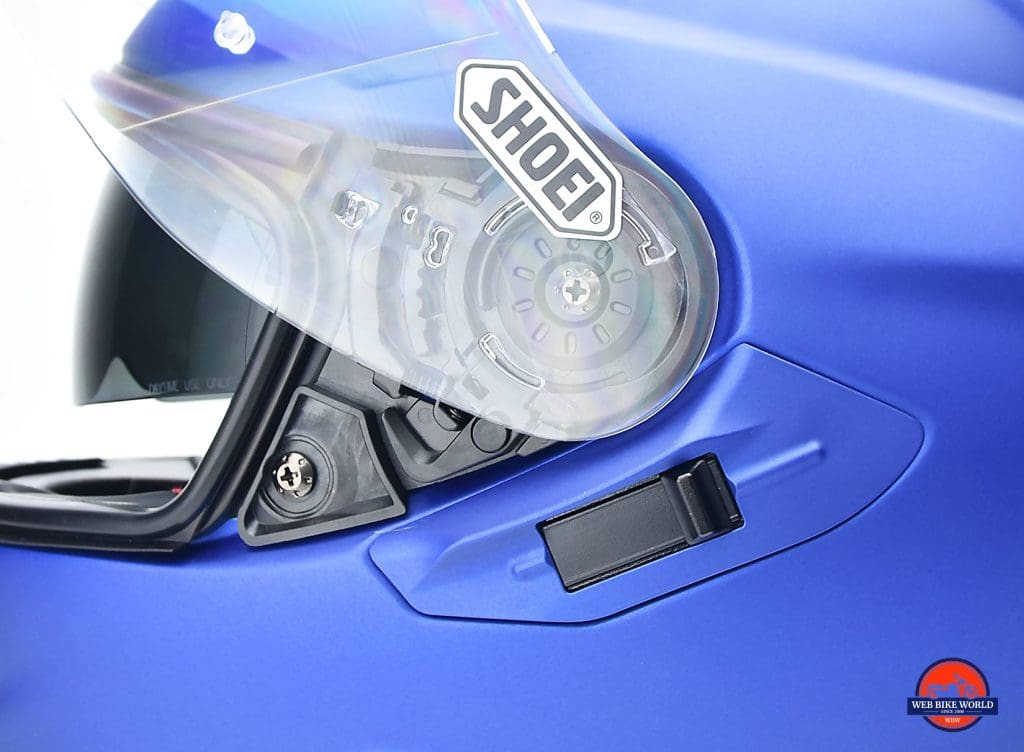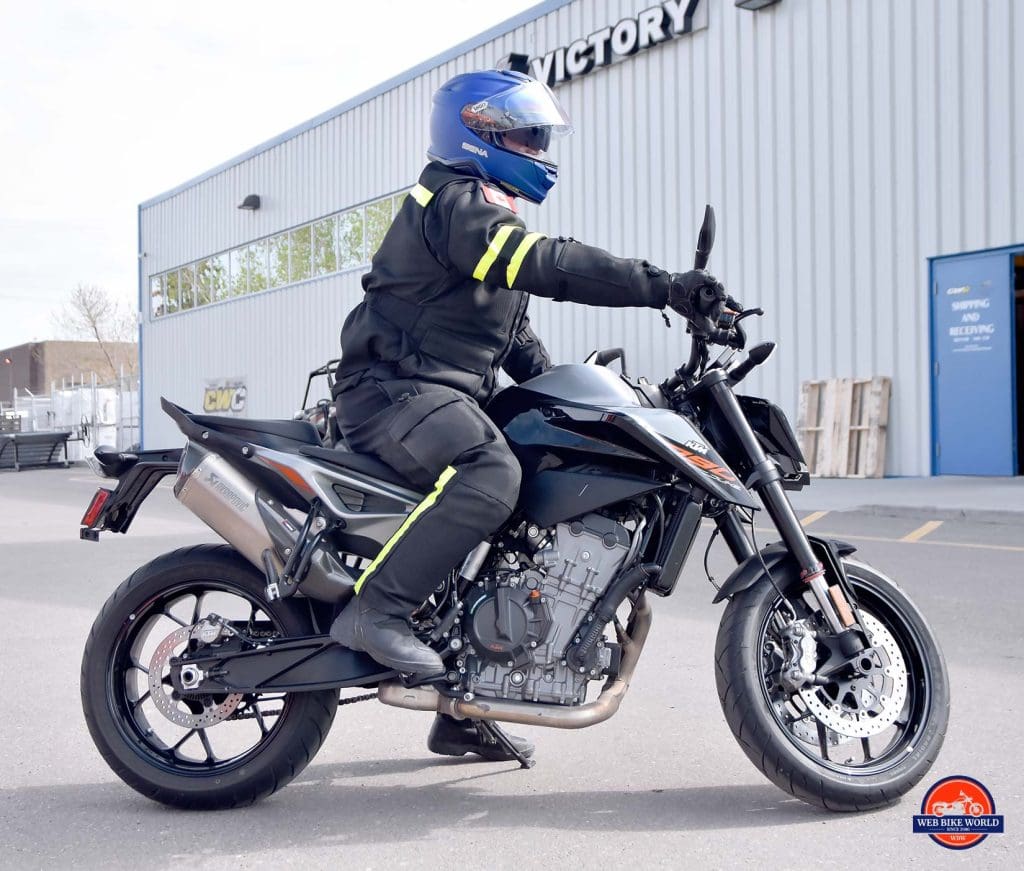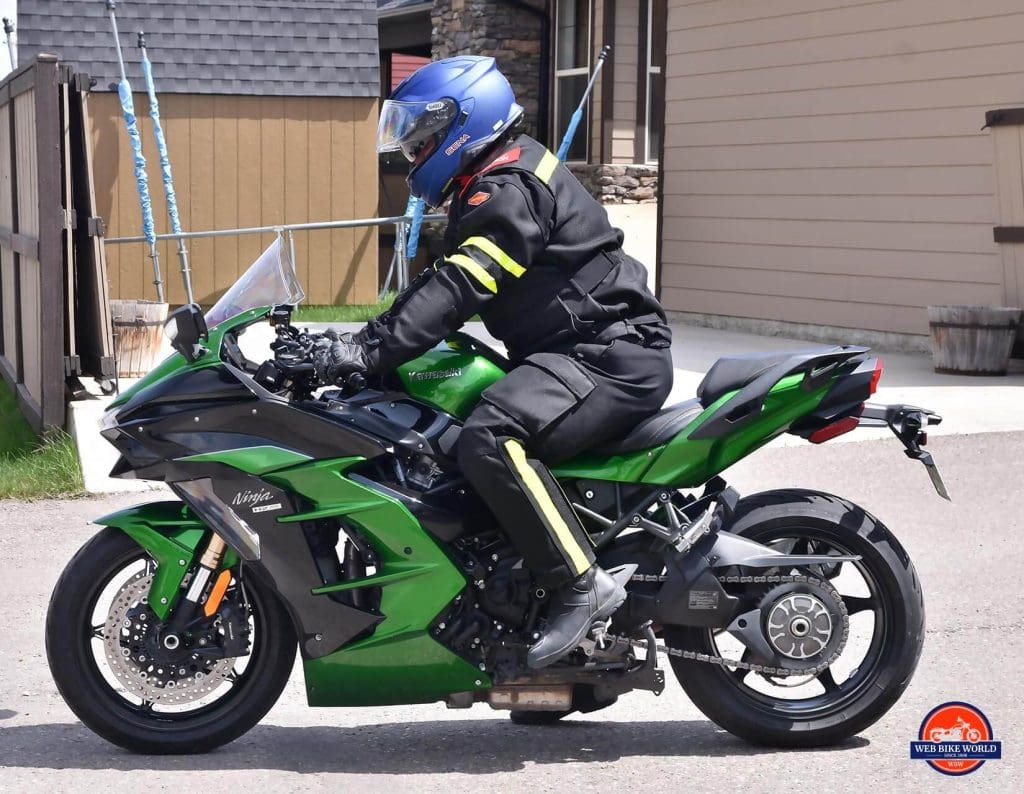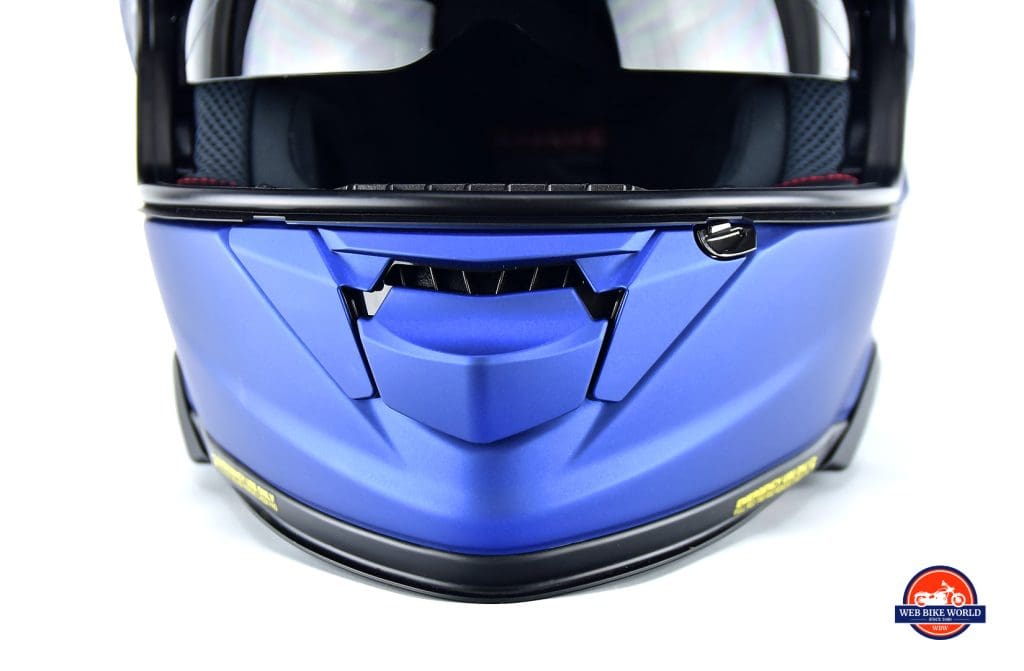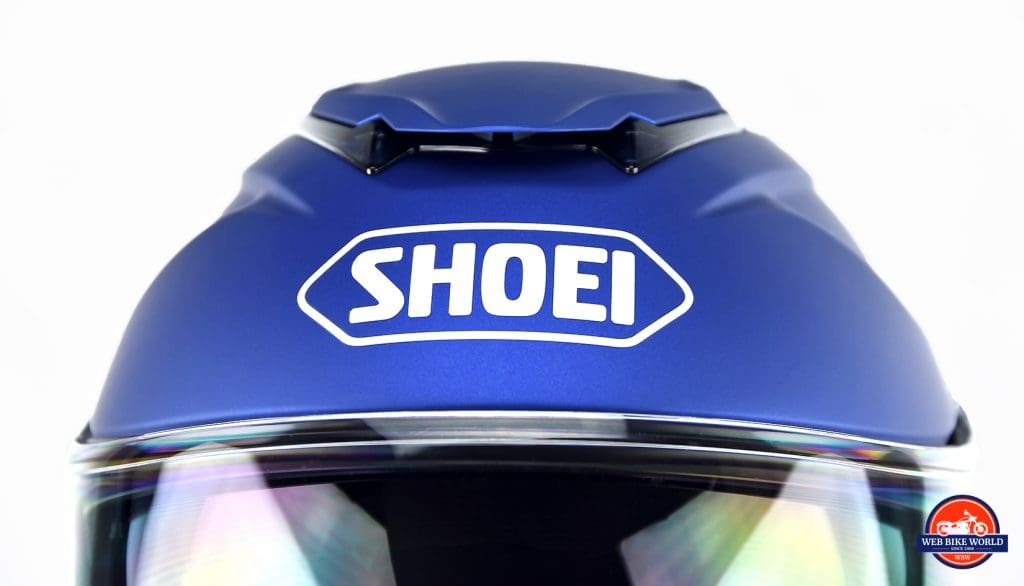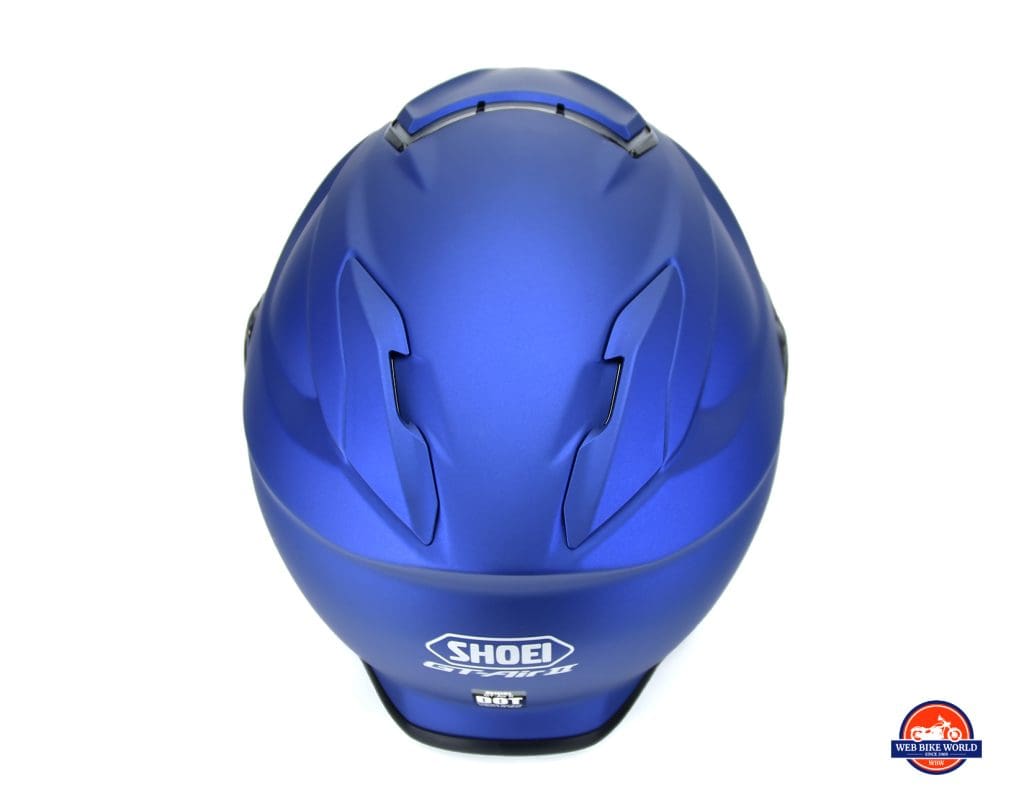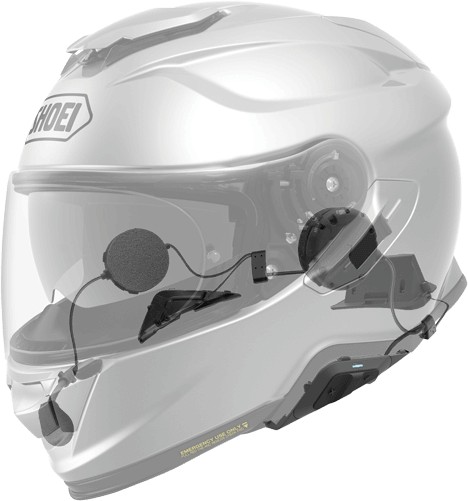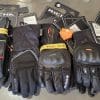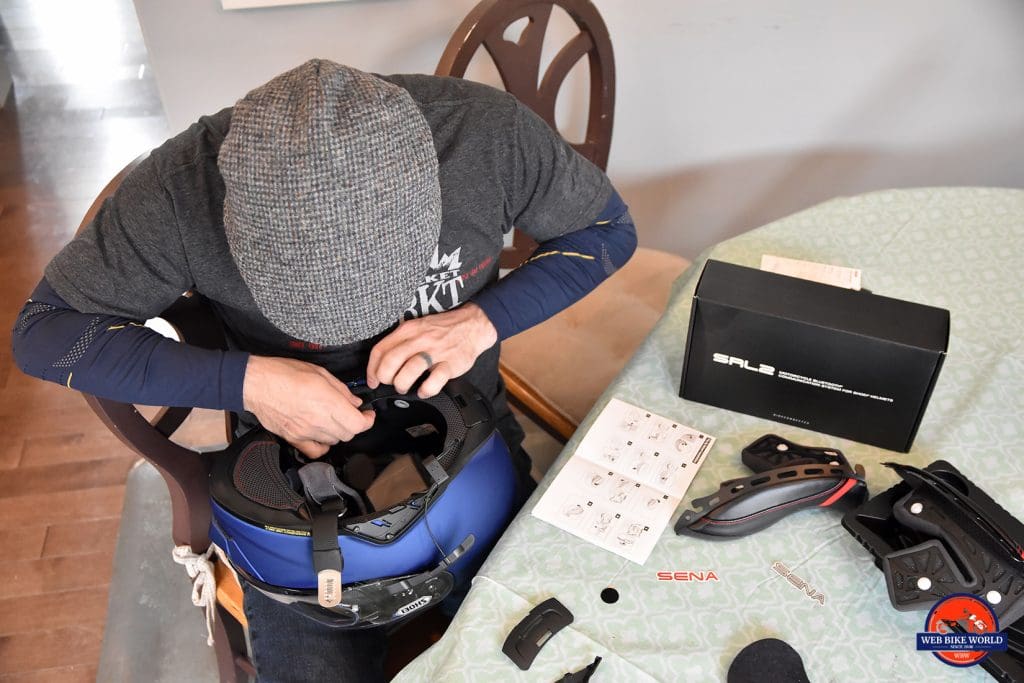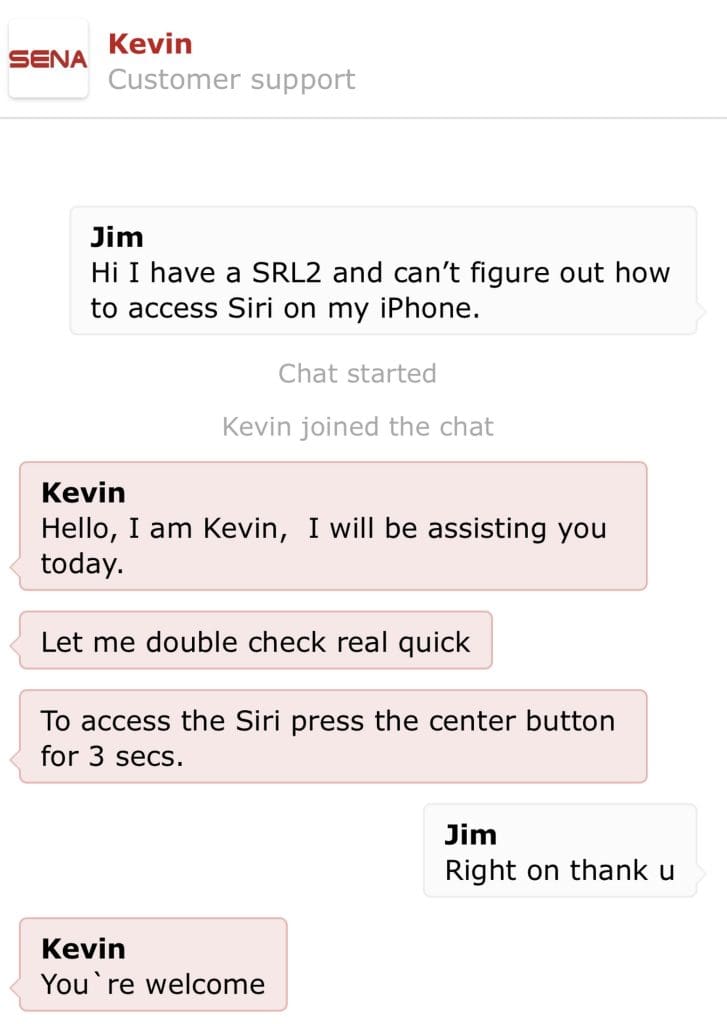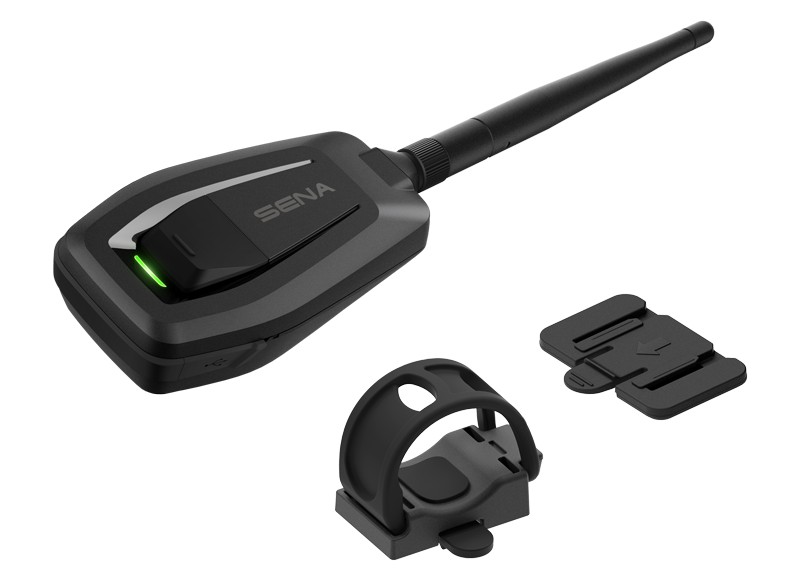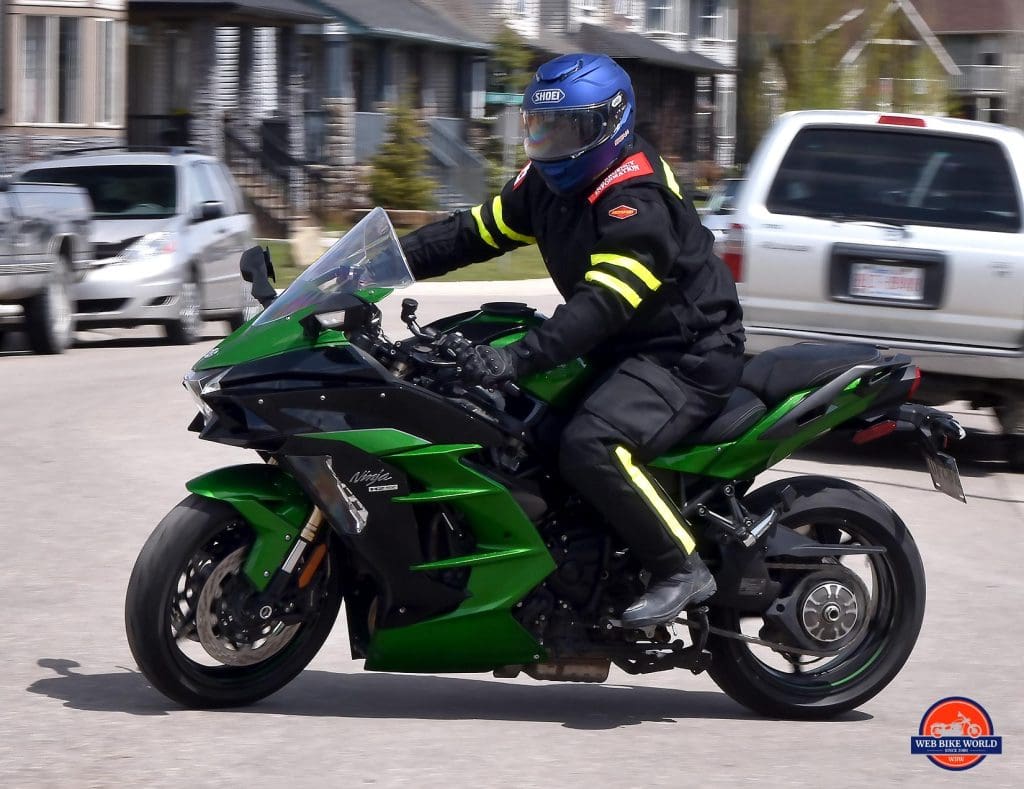I’m regularly informed by many people how my 14 yr old son “looks just like you.”
I can see similarities for sure, but to me, he’s taller, updated, improved, and a less hairy version of me that society will happily embrace whereas it mainly just tolerates me.
He’s not remotely my clone (in my eyes), but when someone or something is familiar I notice people often will fixate on the sameness rather than differences.
This is akin to the new GT Air II versus the original GT Air (released back in 2013).
If you’re curious, I reviewed the Shoei GT Air on BestBeginnerMotorcycles (our sister site). You can also read our original GT Air review from 2013 (reviewed by BURN).
I wanted some hands-on experience with it too before I tackled Shoei’s newest addition to the “GTA Family”.
This will primarily be a review of the fresh 2019 edition GT Air II (with the accompanying SENA SRL2), but I’m only human and feel compelled to compare this flashy new Shoei to its “Father” along the way.
Thank you Shoei USA & SENA USA!
Our Shoei USA contacts have always been willing to send in their latest and greatest helmets for review at no charge and this time they even got SENA USA to include the GT Air II purpose built SRL2 Bluetooth system along with it. I’m happy about that because I can’t fully uncover the benefits of the new helmet without the SENA in the picture too.
The original GT Air has speaker pockets inside the EPS foam liner used to house SENA or other similar clamp-on systems, but not an integrated SRL or Shoei Rider Link like this one. This is a whole different story.
First Impressions
What did they change?!
At first glance, this GTA2 really looks A LOT like the original GTA helmet (in black) I have sitting beside it. The new one is obviously a different bright blue color, but at a distance, it “looks just like his Father.”
Huh… maybe I’m no different than those people who comment to me about my son, eh? I need a closer look. Ok, I’m exaggerating and can see some differences right away, but this reads better if I say I can’t, right?
It’s Handsome
The scoops, grooves and flowing lines used to produce smooth airflow grab my eye first – along with the perfectly affixed, bright white SHOEI brand marks adorning the forehead and rear of the helmet.
I admit that logo elicits respect from me and I think Shoei is aware of it too since they added a small logo to each side of the visor. Those two weren’t there on the original GTA and the addition ensures brand coverage in a 360-degree sweep.
See it’s already better than the old one from a marketing perspective.
I joke, but these are premium quality helmets, hand built to exact specs in Japan as opposed to China or anywhere else. I am always impressed with Japanese engineering and quality standards and it’s easy to notice that attention to detail in the GTA2. It’s high end and it doesn’t try to hide it.
Lightweight
The original GT Air came in at a pleasing 3lbs 2 oz on my scale and this new one is even better. With the SENA SRL2 fully installed I register a score of 3lbs 12 oz on my scale! Nicely done keeping the whole thing under the 4lb mark.
For me that 3 to 3.5lb helmet weight range is right where I want to be ideally. I find the wear and tear on my neck muscles is non-existent there, but I’m used to wearing a heavy hard hat nearly 12 hrs a day when working at my day job as a heavy duty mechanic.
Multi Density Foam
Photo from Shoei
The EPS foam in the helmet varies in density and that also contributes to keeping the helmet lighter than it would be with uniform foam throughout. They claim this allows custom tuning in crash zones additionally to benefit the wearer’s head should they crash.
I’m not sure I follow how having less dense EPS in certain areas can be beneficial, to be honest. Perhaps I need a physicist to explain it to me sometime.
The original GTA also had this feature.
Exterior Shell Design
Shoei uses a hand-woven blend of fiberglass, resin, and organics to create a stiff, strong, and light shell design. They call it a Multi-ply matrix AIM design and you can get the GTA2 in 3 different shell sizes.
This helps ensure you don’t end up looking like a bobble head doll because a size XS shell will be more proportional to your smaller head and body instead of having to wear a large helmet size shell with a thicker amount of padding and foam inside to take up the gap.
Exterior Matte Finish Durability
One of my complaints about the original GTA was the matte finish durability… or lack thereof. I managed to put several nicks and dings in it despite my usual level of careful handling. Each mark I installed on the helmet stood out like a sore thumb because underneath the black exterior lay a bright white layer. Ugh!
I’m happy to report Shoei has remedied this on the GTA2. After nearly the same amount of miles spent on the road AND being manhandled thoroughly during the SRL2 installation process, there isn’t a single imperfection to be found on this pretty blue helmet.
This may seem like a small victory, but it’s significant to anyone like me.
DOT Approved Only?
It surprised me to find the GTA2 is only DOT approved just like its Father was before it. Not ECE or SNELL, just DOT.
There is a slightly different model GTA2 sold in Europe that is ECE only approved, but no SNELL approved models exist probably due to the fact it has an internal sun lens. The SNELL Memorial Foundation doesn’t approve of these popular features from what I have noticed.
I asked Matthias (our Shoei contact) about this single approval thing and what I understand from his answer is that the ECE and DOT standards are quite different, so in order to pass both sets of testing the helmet would have needed to be made significantly heavier.
This is something Shoei wants to avoid and they’re confident the DOT standard alone (or ECE alone in Europe, I suppose?) is enough with this helmet. I have no reason to disagree with that logic and will trust they’ve done their research to back up that position.
Using It Abroad?
Dual ECE/DOT approval might not necessarily make the helmet safer in the opinion of Shoei, but I wonder if you bought one here then brought it overseas, would you have a certification issue and get ticketed by a sharp-eyed officer of the law?
Aerodynamics
Those weird, lateral grooves and lines (shaped vaguely like large reptile eyes) combined with the pointed spoiler fin built into the back of the helmet shell are all about smooth flow. Shoei has spent a ton of effort and money looking to make the GTA and GTA2 quiet.
I can confirm the original GT Air was very quiet on my head over hundreds of miles. In fact, I feel it’s the quietest helmet I’ve tested to date.
This new one should be the same in theory because the majority of the lines and scoops are identical, but I notice some minor changes to the ones on the vents and chinbar as I take more time to analyze them carefully.
Head Shape
Here’s the thing I’m most excited about when it comes to the new design.
Comparison of GTA vs GTA2 width
The original GT Air really pinched my head in a cruel and unusual way across the temple and upper cheekbone area on both sides. I’m not exaggerating saying that after 40 minutes with it on my head I was in agony thanks to my round oval shaped cranium being clamped inside it. I’m calling the GTA out as a long oval helmet despite the intermediate oval label Revzilla and others put on it.
Why So Narrow?!
The “mouth” of the helmet (the opening you push your head through) on the original GT Air was so narrow I had difficulty donning and doffing it without shearing off my bearded cheeks. It was so bad I felt obliged to ask Matthias if I had the wrong size, but nope a Medium was correct for my 23 inch (58.42cm) noggin’ circumference.
Perhaps I need to apply some Shoei silicone lubricant to my cheeks first? Also no. Those small bottles of lube that come with both the GTA and GTA2 Shoei helmets are only for smearing on the rubber visor seals to help them keep water outside.
What’s the Difference?
GTA helmet (top) GTA2 helmet (bottom)
I measured the diameter of the mouth opening on the original vs the GTA2 and found the new helmet mouth is 10mm wider. That 10mm is the difference between me practically needing a shoehorn to install the helmet on my head and just slipping it on as I would any other full-face helmet.
Thank you, Shoei… sincerely my face and head.
Sizing Up The GT Air II
Bearing that experience in mind, I requested a size medium, round oval shaped GTA2 from Matthias because I know they must exist in the Asian market. People from Asia tend to have round oval shaped heads as I do, despite the fact I claim 100% European ancestry.
Matthias informed me the GT Air II was carefully redesigned to be much more neutral shaped and encouraged me to try it as is. If it was still too tight on the sides and cheek area he offered to send thinner cheek pads to sort out any discomfort.
In the end, I didn’t need the thinner cheek pads even though the new helmet still bites lightly on my temple areas after 40 minutes on the road. Round oval head problems…
3D Max-Dry Interior Padding
Those thinner pads are a part of the 3D Max-Dry system used in the helmet interior. Shoei does an excellent job of providing multiple options of thickness to choose from to ensure you get a snug yet comfortable fit.
They also claim the materials used in the liner/padding wick away moisture twice as fast as traditional nylon materials.
I can’t figure out a way to test that claim, but I wore the helmet in temperatures ranging from 3 Celsius (37 F) to a high of 23 Celsius (73 F) and never had sweat soaked hair when I removed it.
Those certainly aren’t ultra-high temperatures to test the helmet in, but it’s the best I could manage in our young Canadian Spring thus far. I’ll get a better idea in July and August when it can get in the 90s and even low triple digits at times here in Alberta.
Three “Flavors” of Lining Material
I like very much the three different materials used in the liner and padding.
There’s fuzzy microsuede around where my more sensitive neck and jawline skin are, while the coarsest mesh is only up around the crown section to aid airflow. Everywhere else is a middle ground type of cloth that doesn’t easily catch on stubble or beard to my relief.
All in all the interior padding is top notch, anti-bacterial/microbial, fully removable, and washable as I would demand from a helmet of this caliber and price point. Shoei delivers the goods here.
It’s also very similar to the liner found in the original helmet with the main difference being the addition of red stitching running along the leather on the bottom of the opening or mouth of the helmet.
EQRS Latches
Photo from Shoei
On the bottom of the cheek pads on the leather area, you’ll find two red strips of nylon which are there to be pulled on in the event of an emergency to remove all the cheek padding and foam at once. A nice feature should a disaster occur and your helmet needs to be removed quickly to give medical aid.
Visor & Sun Lens Perfection
Of all the nice features on the helmet, the optics really stand out to me.
Included with the helmet is the essential PinLock Evo anti-fog lens that makes visors virtually fog-proof regardless of temperature, humidity, and weather in my experience. I’ve never been able to fog one up even exhaling ridiculously out my mouth directly at them. The one on the GT Air and GT Air II both are perfect.
Visor Coating
You’ve probably noticed the rainbow colors captured in some of the photos of the visor by now. It’s likely a chemical coating that makes it slippery for lack of a better word.
I’m noticing this more and more on new helmets because it works well in stopping bugs, water, dirt, etc from sticking to the visor. Effective cleaning can be accomplished using only a napkin and warm water in a pinch. You don’t really need soap or cleanser anymore.
Locked In Visor Positions
There is 8 visor resting positions to choose from on the GTA2 including fully open and closed.
This visor can be propped open ever so slightly (about 1/4”) and stay there regardless of wind force at 100mph+ acting directly on it. It’s utterly perfect. I tried very hard to get it to fly open or slam shut with my head stuck out directly in the wind blast with no effect.
Damn it’s good. I’ve tested several other high-end helmets that wouldn’t stay cracked open with wind working on it.
I do find it a bit tricky to completely close the visor with only one hand from this barely open position. I tend to open it two or three other positions first then use momentum to overcome the small visor stop on the left side responsible for keeping the visor slightly ajar.
Swap The Visors?
Curiosity got the better of me and I decided to try swapping the visors to see whether they were the same. Affirmative.
No problem doing the switcheroo thanks in part to the user-friendly latching system Shoei uses on their helmets. It appears they didn’t change the visor or hinge design from the old helmet to the new save for the added extra branding I previously mentioned.
Chinstrap Design
The GTA is equipped with a traditional double D ring chinstrap closure while the GTA2 gets upgraded to an all metal, micrometric ratcheting latch instead.
I’m a big fan of the ratcheting one. It’s so quick to put on and take off while conversely, I find the double D labor intensive, clunky, and bothersome to manipulate especially when fastening it with gloves on.
The Tables Then Turned On Me
Cam our WBW Content Editor has the opposite view, and contends that when fastened the large latch on the micrometric style irritates his “Adam’s Apple”.
I’ve never experienced that issue until testing out the GTA2 on the road. There’s no way I’d allow Cam to win this debate so I looked for a way to be at peace with the GTA2 chinstrap immediately.
The solution was simple: remove the bulky and unnecessary rubber boot from the strap. I believe Shoei put it there to cushion any rubbing on the wearer’s neck, but it backfired in this case big time. I haven’t missed the rubber boot since tossing it and once again all is right in the universe.
Nice try, Cam. I know you’re somehow behind this attempt at smearing the ratcheting chinstrap’s good name.
Integrated Sun Lens
Here’s another subtle yet noteworthy improvement from the old GT Air to the new one.
The original integral GTA sun lens didn’t drop down low enough for most people’s liking. Shoei heard their cries of frustration and acted appropriately on it. The new GTA2 lens will max out 5mm lower and so blocks sun and glare more effectively without touching my schnoz. Good choice, Shoei! It’s just right now after the change.
I’m pleased with the clarity and tint level on the new GTA2 lens just as I was the original. Shoei does such an outstanding job with their optics that I can confidently call them perfect.
The sliding switch to raise or lower the sun lens on the GTA2 is buttery smooth to use and located out of the way, but also nicely within reach near the left side visor hinge.
Out On The Road!
Noise Levels
Much to my surprise, I don’t find the new GTA2 to be as quiet as the original.
It could be explained away by saying the original helmet squeezed my head around the ear areas hard enough that it artificially seemed quieter. Regardless the GTA2 is a quiet helmet by any standard and I never noticed a high-pitched whistling coming from the visor seal as I did on the original GTA.
The GTA2 is free from booming and roaring noise. What you will hear is a constant hissing instead as was the case with the GTA. The difference is the GTA2 has just a slightly lower frequency hiss than the original in my opinion.
Ghost Noise
What I did find weird was what resembled the sound people make when they imitate a ghost or howling spirit coming from the new GTA2. It shows up when I poke my head out from behind my bike’s windshield into the wind blast, facing dead ahead with the helmet level to the ground. It’s a medium toned sound resembling “WooOOOooooOOOOooo!”
This “Ghost of Helmets Past” noise was intermittent during testing but present more often when the temperature was low around the 5 to 10 Celsius range (41 to 50 F) and went away once things warmed up beyond that.
I determined the source as being the vent on top of the helmet by placing my hand over it with the noise present. Opening or closing the vent only slightly changed the sound, but tilting my head forward got rid of it.
Naked Bike Appropriate
I found the GTA2 to be ideal when used on naked sport bikes like the new KTM 790 Duke I recently got to demo. Without turbulence being stirred up by fairing or windshields, the helmet was the quietest.
Lift & Pull
I noticed little or no pull or lift even in heavy crosswinds. Shoei really nailed the wind tunnel testing. The fin on the back likely has a large hand in this.
Airflow
Another gripe I heard about the original GTA had to do with using it in high summer temperatures by people with longer hair. The air flow was insufficient across their scalp and those people sweated profusely inside as a result.
I have short hair and the highest temperature I wore the GTA in while testing was 18 Celsius (65F) so I can’t comment on that very well.
The GTA2 is a different matter. The air vents are shaped differently than on the old helmet although the two at the front still have the same two positions to choose from.
The big change is how the rear vents on the GTA2 aren’t adjustable as they were on the GTA.
Shoei also slightly increased the inside area of the shell up top to give better flow. It worked.
It was apparent to me the airflow was noticeably improved whether the vents were open or closed on the GTA2 compared to the first edition lid. In cooler weather, I actually noticed the top of my head was getting cold with the top vent fully opened.
SENA SRL2 System: 4.5 out of 5 stars
Performance: 4.5/5
Ease of Use: 4/5
Battery Life: 5/5
Design: 4.5/5
Value for $$$: 4.5/5 (Cost is $299 USD at Revzilla)
What’s the Benefit of a Fully Integrated SENA System?
The thinking behind seamless integration of the Bluetooth system isn’t just cosmetic, it’s a safety thing.
Photo from Shoei
Consider this. A SENA 30K, for example, is a big, hard plastic lump clamped onto the bottom edge of the external shell of the helmet that could create an extreme pressure point if the rider lands on it in a crash. The helmet shell isn’t built to manage forces transmitted through that clamp holding it on the shell and could possibly compromise the wearer’s safety and helmet shell integrity.
The fully integrated system has no such problem nor can it as easily catch on the pavement during a slide and wrench the wearer’s neck as a result.
It’s more than just a pretty face, eh?
Installation
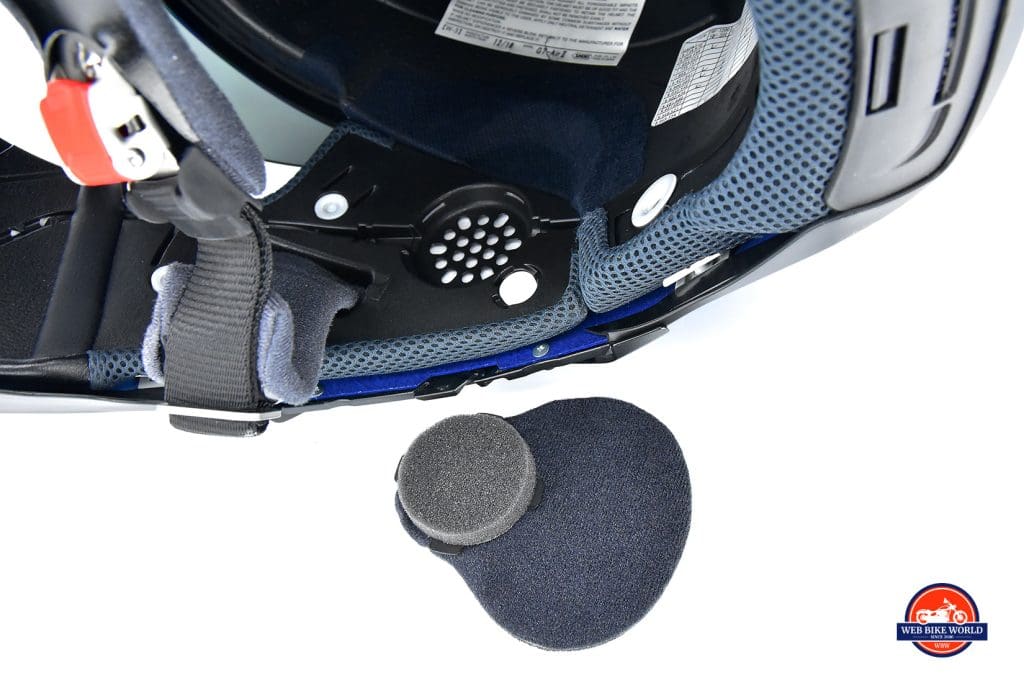

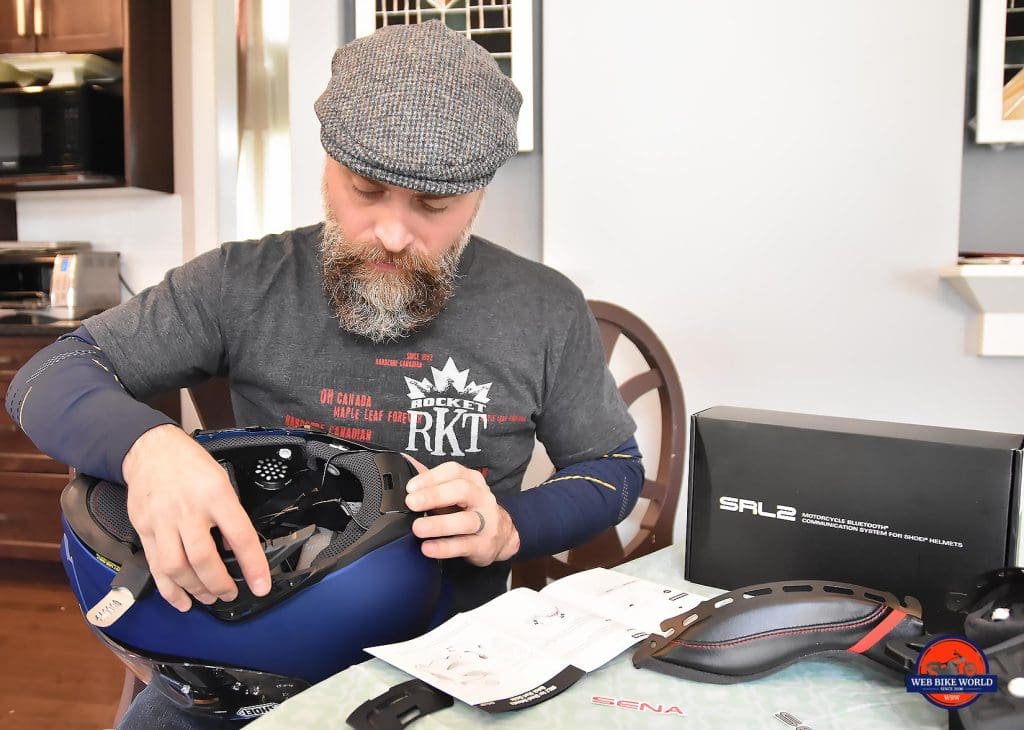

This SENA one was just too easy and the routing obvious as to where to run wiring, speakers and the microphone. The instructions were very clear to follow, but really I didn’t look at them much because everything was mostly self-evident once I opened the box.
Controls
The three button design of the SRL2 means you have to sometimes push more than one at a time to execute different commands which takes a little getting used to. The buttons perform many different functions depending on how long you hold them down as well. I got the hang of it within a day and like it a lot.
I especially like being able to get Siri from my iPhone to perform tasks for me hands-free through the SRL2. I can get directions from Google Maps, send texts, or make phone calls this way.
You can alternately control the SRL2 through a free, downloadable app as well which I find works quite well during the initial setup or doing more complex setting changes.
SENA Helpline
If you just can’t figure out how to get something to work there’s a Live Chat feature (small red ‘Chat’ bubble in the bottom right) to be found on the SENA.com website I find helpful.
I used it successfully to understand how to get Siri on my iPhone activated in the SRL2 because the instructions in the manual weren’t clear to me. An agent named “Kevin” responded in acceptable English with the correct answer to my question within 2 minutes of me typing it in.
No it wasn’t exactly advanced Calculus he was helping me with, but the SRL2 is a new product so I’m sure he would have needed to look it up himself to know.
See below for a screenshot of the conversation.
Voice Commands
I prefer using voice commands instead of the buttons to work with my friendly Bluetooth assistant named Sena. The only issue with this is once I get moving faster than 80mph Sena can’t hear me calling her name out for help even in a quiet helmet like the GTA2.
I can’t help wonder why SENA doesn’t configure the voice commands to be more complex like the Cardo system ones are? I find it tiring to “wake” Sena each time I want something done before issuing the command. For example:
To check the battery power I first “wake” Sena by saying “Hello Sena.” She responds with “Say a command.” Me: “Check battery” and she tells me where it’s at.
A Better Way
With a Cardo Packtalk I could wake the system and request a battery check in one sentence without waiting for a response from Cardo. “Hey Cardo, check battery.” That’s how it should be done on this SRL2, and I feel like this was a missed opportunity for SENA to streamline the SRL2.
My Jacket Must be Lonely
The left shoulder armor in my jacket sometimes initiates SRL2 button strikes while riding when I roll my neck around to stretch because of the close proximity of the control buttons to it. This would often unintentionally set Sena off trying to create an intercom connection with a friend who wasn’t there.
Features
General
- Talk time: 10 hours
- Operating temperature: -10°C ~ 55°C (14°F ~ 131°F)
- Dimensions:
- Speaker: driver unit: 31.9mm diameter / 4.4mm thick
- Boom microphone length: 55mm
- Wire between speakers length: 85mm
- Weight: 100g (3.53 oz)
Audio
- Noise cancellation: Advanced Noise Control
- Coedc: Built-in SBC Codec
- FM Radio
- Frequency: 76 ~ 108 MHz
- 10 preset station memory
Bluetooth
- Bluetooth 4.1
- Headset Profile (HSP)
- Hands-Free Profile (HFP)
- Advanced Audio Distribution Profile (A2DP)
- Audio Video Remote Control Profile (AVRCP)
Intercom
- Working Distance: Up to 1.6 kilometers (1 mile) in open terrain
- Supports up to 8 riders
Battery
- Charging time: 2.5 hours
- Type: Lithium Polymer
Speakers
The speaker quality in the SRL2 is adequate for my needs but could be better. There’s very little bass to be had, but it’s not a huge loss since engine drone and wind noise would likely drown it out anyway. They’re loud enough and clear enough to listen to music, talk to other riders in my group on the intercom, even answer and make phone calls while on the move.
This SRL2 did everything I expected it to based on SENA’s description of the product and I think it’s a worthwhile addition for the GTA2 helmet.
Advanced Noise Control
The GTA2 chinbar has a lovely spot on the inside for installing the microphone in that resides directly in front of my mouth.
My wife tells me our phone conversations while using it were perfectly clear, unaffected by wind noise and that I didn’t sound robotic or digital as I have sometimes on other devices I’ve tested. This is accomplished by the Advanced Noise Control technology SENA built into the system.
Battery Life
While I’m sitting here writing this I’ve actually got music playing on the SRL2 in an attempt to test battery life.
Finally, I hear Sena interrupt the song to announce “battery level is low.” Two hours later she shows up again to tell me she’s shutting the party down because the battery is depleted and needs recharging. Very impressive!
I only charged the system fully once before installing it in the helmet, then proceeded to ride about 400 miles total on that one charge. Still, the battery was registering at a high charge. The instructions say you can talk for 10 hours and my testing confirms that and more.
I used it for communicating via intercom with a SENA 30K for about an hour, used Siri and Google Maps for about 30 minutes, made and received several phone calls while riding over several hours, but mainly I just listened to music the rest of the time.
SRL2 & 30K Relationship Problems
The SRL2 is based on the old 20S platform which has its share of problems cooperating with the newest SENA 30K system. I found that the SRL2 and 30K still can’t multitask while linked via intercom. By that I mean if the two are linked and both people are speaking that speech gets interrupted/shut down during when one person begins sharing music.
Basically running more than one function combined with intercom causes these intercom problems. I’m disappointed to find SENA hasn’t resolved this yet, to be honest.
Dual Mesh Missing
I thought for sure a newly designed, second-generation Shoei Rider Link system would have the Dual Mesh feature on it, but alas it’s not there on the new SRL2.
Dual Mesh is far superior to basic intercom between riders on separate bikes your passenger because everyone automatically connects or reconnects to the chat group whenever they come in or out of range instead of having to be manually connected each time. It’s kind of like having a party line active that anyone can join in on just by coming within a mile of you.
Photo from SENA.com
Having said that I see SENA has gone one better and just released a transmitter which allows any SENA device to use dual mesh now. Link for this new device here.
The Final Verdict?
The Shoei GT Air II is a terrific helmet that I feel would please most anyone. If I could get my hands on a round oval one it would easily be my everyday choice of head protection. Even with a slight bit of pressure on the sides of my head it still may end up on my head more often than not. It’s that good!
I feel the high price is justified because all expected quality markers are present and the helmet feels solid and safe on my head. It’s got it all: good looks, great technology, premium features/material composition and it’s quiet too.
Without a doubt, this excellent offspring born out of a Shoei and SENA romance should be seriously considered by anyone shopping for a new full face helmet and communication system.
The SENA SRL2 is to the GT Air II as peanut butter is to jam. The SRL2 does its job as expected and is slightly improved over the SRL1, but I’m less impressed with it compared to the helmet it’s made for. It could be perfect after a couple more slight improvements.
I think SENA should have used the 30K platform instead of the 20S to build the SRL2. Then it would have all the latest technological goodies incorporated into this awesome sport touring helmet.
In particular, I don’t want to spend more money buying the Mesh+ adapter then try to mount it somewhere on the bike or helmet. Installing it on the helmet especially would negate the integrated design safety benefits of the SRL2.
The safety benefit of the fully integrated SRL2 shouldn’t be undersold or dismissed. More and more helmet manufacturers are coming around to realizing clamp on Bluetooth systems can make crash injuries worse.
Pros
Acceptably Quiet / Pinlock included / Excellent Airflow / Lightweight / Internal sun visor / Fully integrated SENA SRL2 option / 5 year warranty / Durable exterior finish
Cons
Not as quiet as the original GT Air / Round Oval wearer problems / “Ghost” noises / Fairly expensive / Chinstrap discomfort
Specs
- Manufacturer: Shoei Helmets
- Price (When Tested): $599 USD
- Made In: Japan
- Sizes: XS-XXL
- Alternative colors: 8 colors in a solid model & 18 with graphics
- Review Date: May 22, 2019


